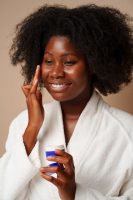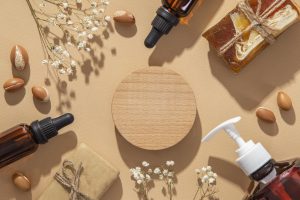Embrace your unique complexion with a simple routine tailored to your needs, no 10-step ritual required.
Healthy skin isn’t just about how you look; it’s also about how you feel. It reflects your overall well-being and helps boost your confidence. With social feeds overflowing with elaborate regimens, it’s easy to feel overwhelmed. But real results come from understanding your skin, mastering a few core steps, and gradually layering in targeted treatments.
Identify your skin type

One of the first things to understand is that your skin is unique. The routine that works for your favourite skincare vendor or influencer might not work for you. So, before investing in serums and masks, spend a day observing how your skin behaves after a gentle cleanse.
Generally, skin types are categorised into oily, dry, combination, normal, and sensitive.
Oily skin becomes greasy and shiny within hours.
Dry skin usually feels tight, rough, or flaky.
Combination skin is when certain areas, like the T-zone (forehead, nose, and chin) are oily, while other areas, like the cheeks, remain dry.
Normal skin remains balanced, neither too oily nor too dry.
Sensitive skin is reactive, often becoming irritated, red, or itchy with new products.
Accurately diagnosing your skin type will help you choose formulas that deliver hydration without irritation.
Steps to follow

Don’t feel pressured to layer multiple products just because others do. Your skin’s needs are not the same as theirs. A pared-back routine can deliver dramatic improvements if followed consistently.
For beginners, starting with just three essential steps is enough: a cleanser, a moisturiser, and a sunscreen.
Cleanse with a mild formula suited to your skin type: gel or foam for oily, cream or milk for dry.
Moisturise using a lightweight lotion if you’re oil-prone or a richer cream if you need extra nourishment.
Protect daily with a broad-spectrum SPF 30+ sunscreen, rain or shine. Don’t skip this.
These three steps clear pores, reinforce your skin barrier, and shield against UV damage, the chief culprit behind premature ageing.
Choosing the right product

Choosing the right product depends on understanding what ingredients suit your skin type. For instance, a foaming cleanser may be perfect for oily skin but too drying for someone with dry or sensitive skin.
The same applies to moisturisers. People with dry skin might benefit from rich, cream-based options, while those with oily skin often prefer lightweight gels that won’t clog pores.
Before you start using any new product on your face, it’s important to do a patch test. This helps you avoid unnecessary irritation or allergic reactions. You can patch test behind your ear, on the inside of your wrist, or along your jawline or neck, especially if you have sensitive skin. Apply a small amount to one of these areas and leave it for about 24 to 48 hours. If you don’t notice any itching, redness, swelling, or burning, the product is likely safe to use on your face.
Also, avoid harsh or overly trendy products as a skincare beginner. That a product is popular doesn’t mean it’s right for your skin. Even when you’re using the right ingredients, applying them incorrectly can lead to issues. Over-exfoliation is a good example.
While exfoliating can help improve your skin’s texture, doing it too often, especially with potent products like acids (glycolic, salicylic, lactic, or mandelic acids), can damage your skin barrier and irritate it. Hyaluronic acid, despite its intimidating name, is highly hydrating and safe for nearly all skin types.
In the early stages of your skincare journey, keep things gentle and minimal. Your skin needs time to adjust to new products and may become irritated if you overdo it.
Once you’re comfortable with your basic routine and your skin is responding well, you can begin to explore additional products like toners and serums that target specific concerns.
More things to note
Ultimately, you don’t need a complicated routine to have great skin. Begin with the basics and slowly build your regimen over time.
Don’t overwhelm your skin with too many products at once. Even with a simple skincare routine, visible improvements often arrive after 6-8 weeks of steady care, so give your skin time to adjust before trying another new treatment. Listen to your skin. If irritation flares up, pause new products and allow recovery.
Most importantly, be patient. Skincare is a journey, not a quick fix. Results take time, so start simple and celebrate every small victory.








